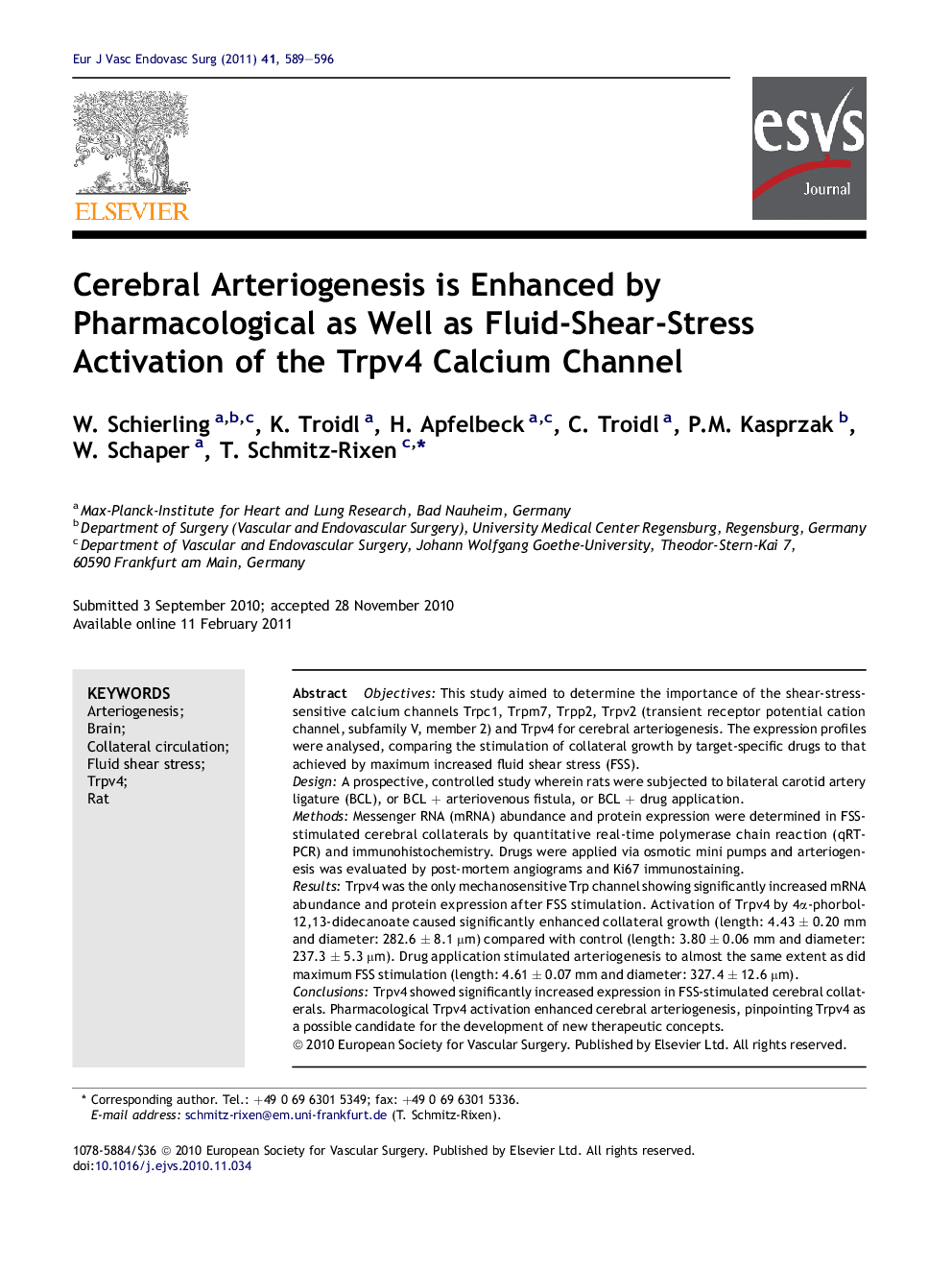| Article ID | Journal | Published Year | Pages | File Type |
|---|---|---|---|---|
| 2913410 | European Journal of Vascular and Endovascular Surgery | 2011 | 8 Pages |
ObjectivesThis study aimed to determine the importance of the shear-stress-sensitive calcium channels Trpc1, Trpm7, Trpp2, Trpv2 (transient receptor potential cation channel, subfamily V, member 2) and Trpv4 for cerebral arteriogenesis. The expression profiles were analysed, comparing the stimulation of collateral growth by target-specific drugs to that achieved by maximum increased fluid shear stress (FSS).DesignA prospective, controlled study wherein rats were subjected to bilateral carotid artery ligature (BCL), or BCL + arteriovenous fistula, or BCL + drug application.MethodsMessenger RNA (mRNA) abundance and protein expression were determined in FSS-stimulated cerebral collaterals by quantitative real-time polymerase chain reaction (qRT-PCR) and immunohistochemistry. Drugs were applied via osmotic mini pumps and arteriogenesis was evaluated by post-mortem angiograms and Ki67 immunostaining.ResultsTrpv4 was the only mechanosensitive Trp channel showing significantly increased mRNA abundance and protein expression after FSS stimulation. Activation of Trpv4 by 4α-phorbol-12,13-didecanoate caused significantly enhanced collateral growth (length: 4.43 ± 0.20 mm and diameter: 282.6 ± 8.1 μm) compared with control (length: 3.80 ± 0.06 mm and diameter: 237.3 ± 5.3 μm). Drug application stimulated arteriogenesis to almost the same extent as did maximum FSS stimulation (length: 4.61 ± 0.07 mm and diameter: 327.4 ± 12.6 μm).ConclusionsTrpv4 showed significantly increased expression in FSS-stimulated cerebral collaterals. Pharmacological Trpv4 activation enhanced cerebral arteriogenesis, pinpointing Trpv4 as a possible candidate for the development of new therapeutic concepts.
